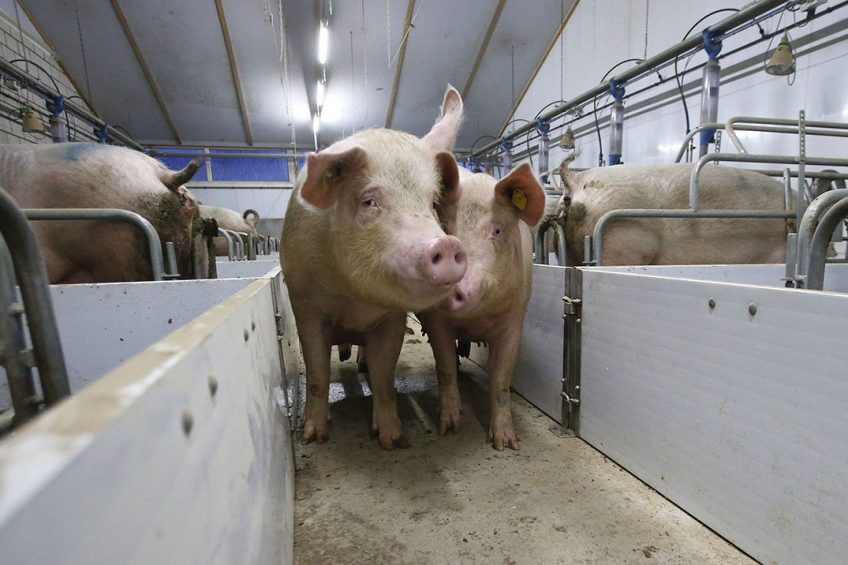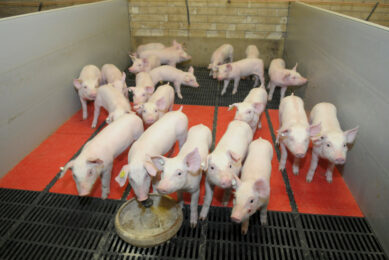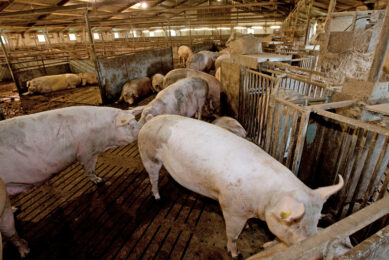One more note on the Zero Zinc Summit…

If there is one thing the Zero Zinc Summit in Denmark showed, it was that finding alternatives to zinc oxide is a big puzzle. No piece of the puzzle should be overlooked, writes Vincent ter Beek, editor for Pig Progress. He thinks zooming into weaning age should not be forgotten.
The problem of post-weaning diarrhoea has become a hot topic again, now therapeutical levels of zinc oxide are being phased out in the European Union (EU). For at least Europe’s pig industry, the issue means: back to square one. Antibiotic growth promoters have long been prohibited and soon zinc oxide will be as well. Now what to do to make sure the piglets do not develop post-weaning diarrhoea?
That is easier said than done. In June, I attended the 1st, highly interesting and very well attended Zero Zinc Summit, held in Copenhagen, Denmark. A large number of experts presented their views on how to overcome post-weaning diarrhoea.
Weaning age was not discussed
In my review on the Zero Zinc Summit, I mentioned in one sentence that ‘weaning age’ was not discussed by any of the speakers. To be honest, I understand why. Professionals in the pig business have been working hard for decades to make the pig industry an efficient, working and profitable business – and the easiest solution to overcome the latest challenge is to find a method that works equally well within the current way of working.
After all, there are a couple of logical reasonings why weaning at the youngest age possible became common practice. When looking at the matter mathematically, one could reach the conclusion that the quicker a sow can get back into production, in theory the highest number of piglets/sow/year can be achieved – a view that is still commonly held these days.
In addition, lactation in general is a strenuous process for sows – the process takes its toll on the animal’s general condition as well as on the teats/mammary glands. Again, a common line of thought is that the longer sows are needed for lactation, the more time they need for recovery before they are back in shape for insemination. What follows would be that a young weaning age is a matter of efficiency, economy and at the end of the road also sustainability.
(To be complete, this picture is changing. Nowadays more detailed studies to sows up to 30 days into lactation have demonstrated that longer lactation actually works positively for sows and their technical results. That would mean that weaning later is actually preferable to reach more piglets/sow/year.)

Read more about pig health in the Pig Progress Health Tool
Antibiotics usage in Belgium
In a very interesting contribution by Dr Merel Postma of the University of Ghent, Belgium, published in May, data were presented about antibiotics usage in Belgium. In that article, she wrote that in Scandinavia, weaning age is higher and these countries happen to be the most modest users of antibiotics in Europe. She wrote, “The idea behind that is – once more – that with weaning at a higher age the piglet will be more robust and more resilient. The animal will therefore be less susceptible for pathogens, resulting in lower need for antibiotics.”
Her work is just one of many that made me think of the bigger picture. When I zoom out, I see an industry that over the decades, has been working hard to make pig production work as efficiently as possible, to make the business thrive in the best possible conditions. Weaning at 28 days or even 21 days was possible to allow swine producers to work as efficiently as possible. Problems regarding post-weaning diarrhoea could be avoided using e.g. AGPs or zinc oxide – so there were no issues.

Why was the Zero Zinc Summit organised? Read the interview with Lisbeth Shooter
What is a pig biologically capable of?
Now that AGPs and zinc oxide have been declared unwelcome substances in the EU, for environmental and health reasons, is the EU then to blame for that? Or is it also a problem that was partially created by the pig industry itself, with nothing but the best intentions in mind? I mean, haven’t we been pushing the boundaries of what a pig is biologically capable of, making ourselves dependent on substances, which now turn out not to be sustainable in the eyes of legislators? In other words, do we really need to search vehemently for more alternatives to zinc oxide or AGPs – or is the real underlying issue here that we would need to rethink current weaning practices?
It’s not a very comfortable question to ask.
Inspiration for solutions around weaning
I’m not suggesting that we all immediately should be weaning at e.g. 6 weeks as from now, far from that. Yet, if later weaning – or more creative ways of weaning – would offer additional insights into the causes of post-weaning diarrhoea, shouldn’t it be at least a research direction that would need exploring and reporting about in this context? Perhaps it may not offer immediate practical and economically viable solutions, but it can help broaden the angle as to how the industry looks at the matter. Perhaps some useful, unforeseen take-away messages can be found.
After all, the conclusion at the Zero Zinc Summit was that the solution to post-weaning diarrhoea does not exist and that the issue requires a multi-disciplinary approach. There are many small pieces together solving the puzzle. In that process, I think no puzzle piece should be forgotten.











